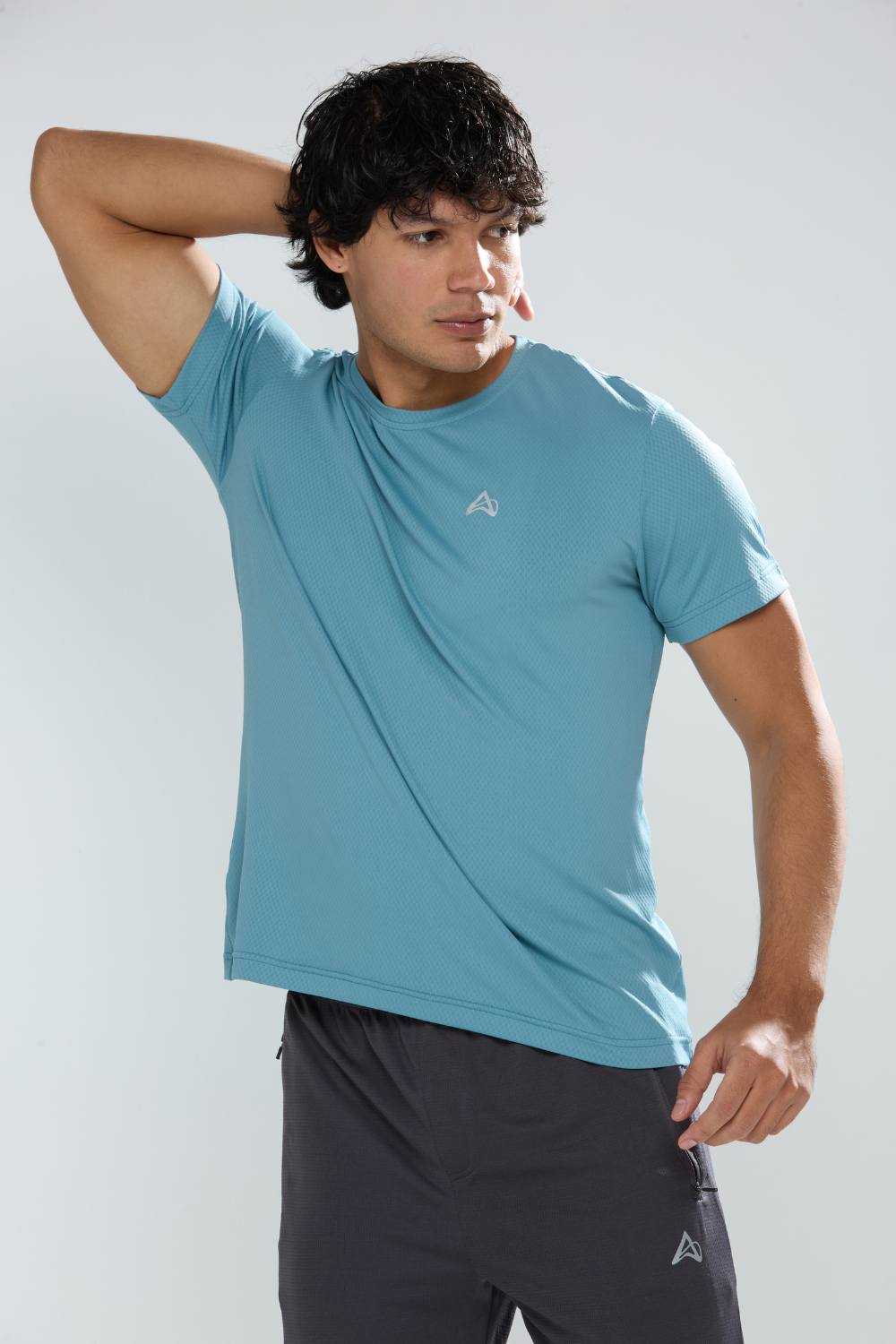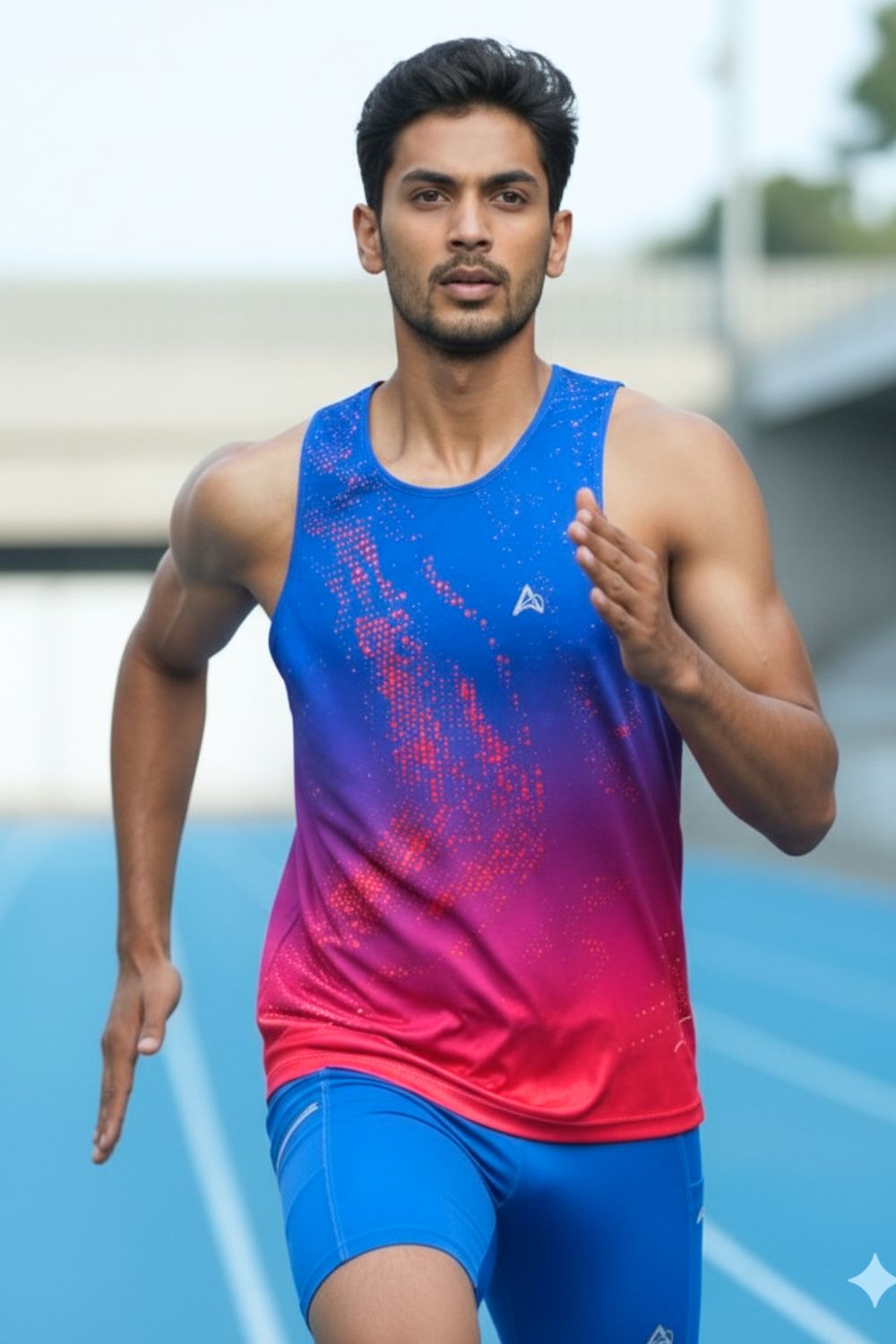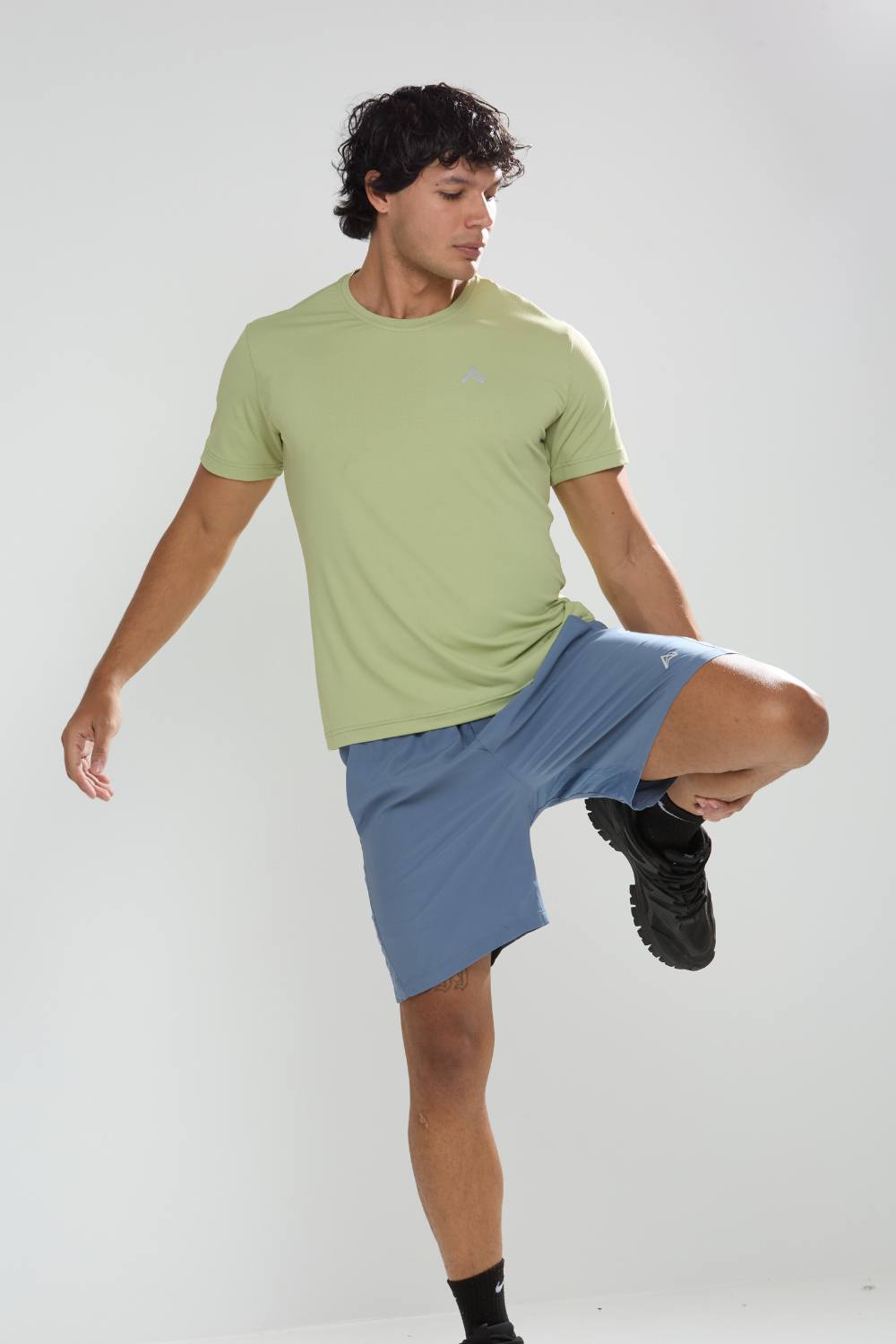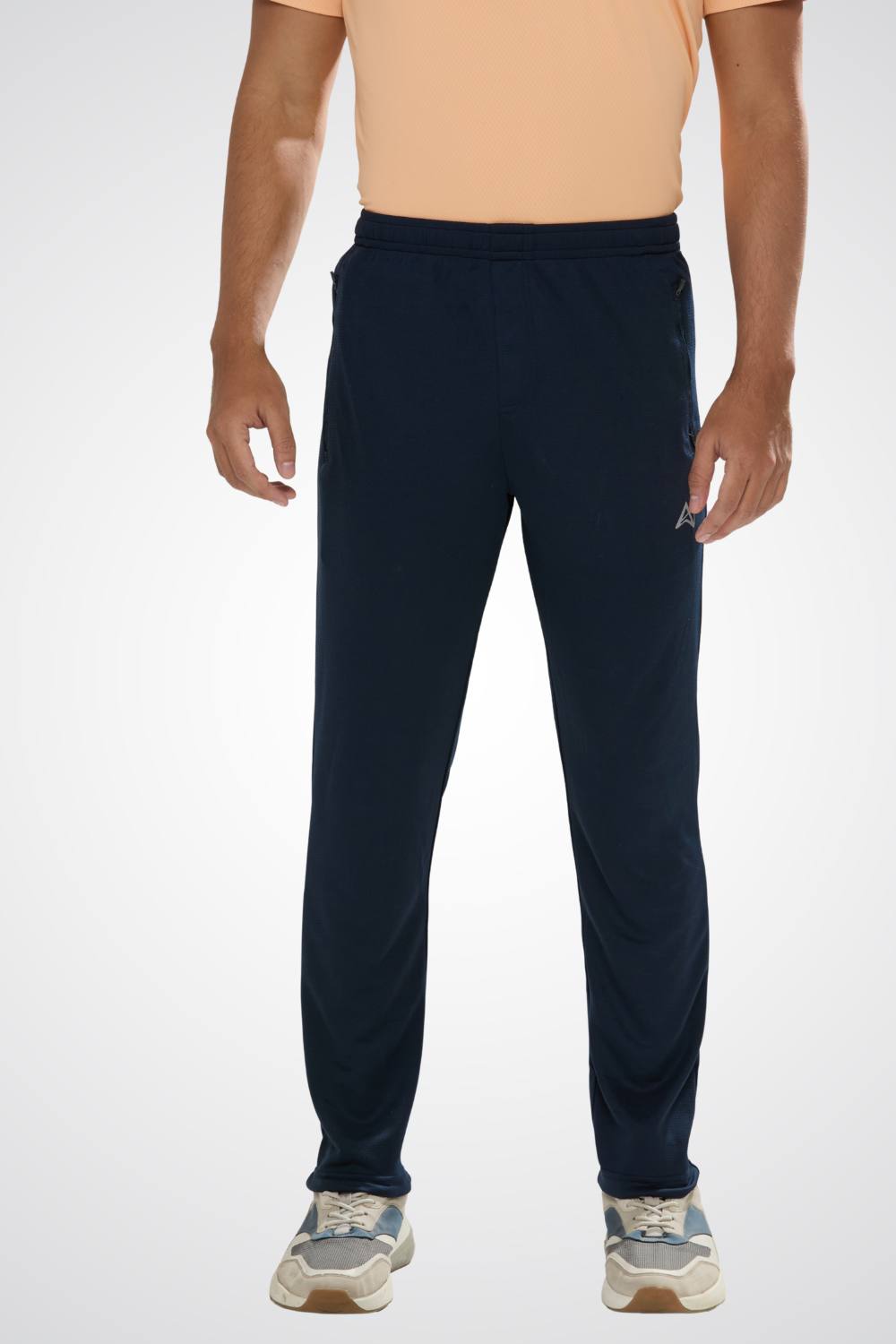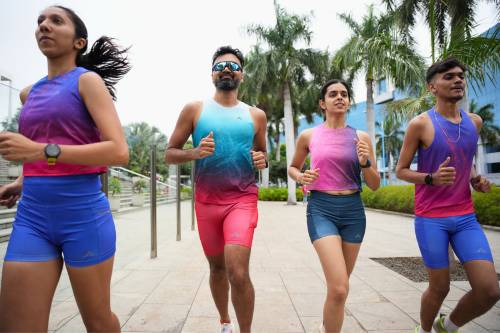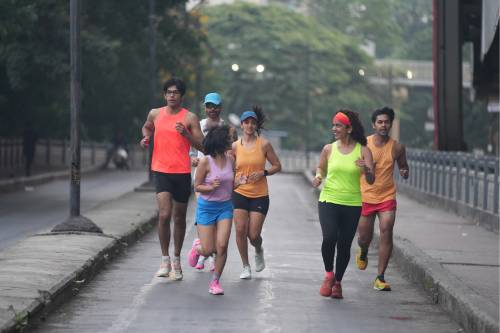Quick Listen:
Amid the bustling streets of Mumbai's Bandra neighborhood and the serene, foliage-draped paths of Bengaluru, a subtle transformation is taking hold. Endurance runners across India those dedicated marathon enthusiasts, ultramarathon challengers, and everyday joggers are turning away from foreign-made sportswear in favor of domestically produced options. These athletes, driven by sheer determination and an expanding emphasis on wellness, discover unique value in Indian brands: clothing that's cost-effective, optimized for performance, and tailored to the country's diverse weather patterns and cultural nuances. This shift transcends mere speed or distance; it embodies a deep-seated allegiance to a burgeoning industry that intertwines national pride with athletic excellence.
Tired of gear that slows you down? Chafing, soggy fabrics, and missing pockets kill your run's momentum. At Aguante, we're runners who get it. Our high-performance activewear features moisture-wicking fabrics, ergonomic designs, and smart storage to keep you focused. Shop Now!
Made-in-India Activewear Captures Momentum
The data paints a vivid picture of expansion. A recent analysis from the IMARC Group indicates that the India sportswear market reached USD 10.2 billion in 2024 correcting common misreports of millions and is on track to hit USD 16.6 billion by 2033, with a compound annual growth rate of 5.1 percent from 2025 onward. This trajectory stems from heightened fitness awareness, widespread embrace of dynamic living, escalating consumer spending power, and a sharpened emphasis on blending utility with aesthetics in athletic attire.
Complementing this, insights from TechSci Research value the sports apparel sector at USD 705.85 million in 2024, forecasting a surge to USD 1,592.58 million by 2030 at a robust 14.52 percent CAGR. Propelling factors include amplified health focus, greater involvement in physical activities, rapid urban development, and supportive policies like the Fit India Movement. The influx of gym enrollments, proliferating marathon races, and youthful zeal for athletics have amplified the call for versatile athleisure and specialized outfits. Both global players and local firms are broadening their footprint, aided by online shopping booms and evolving style inclinations, where buyers favor breathable, elastic, and fashionable pieces suitable for workouts or daily wear.
Runners in India are gravitating toward indigenous labels, sidelining international behemoths. These nimble domestic innovators deliver advanced materials such as sweat-absorbing textiles, friction-resistant constructions, and supportive compression features, all customized for the nation's steamy paths and uneven landscapes. In contrast to overseas products often suited for milder environments, Indian-made gear endures the intense tropical warmth and particulate-laden air. Spanning marathon hubs in northern regions to seaside jogging groups in the south, the appetite for practical yet chic performance clothing is redefining industry dynamics.
Cultural Evolution in Athletic Attire
The ascent of India's activewear landscape extends beyond finances it's profoundly societal. With cities expanding and incomes climbing, exercise has evolved from an indulgence to an essential routine. Athletes navigating Delhi's hazy cold spells or Chennai's oppressive humidity demand equipment that matches their rigor. Homegrown companies are rising to the occasion, providing flexible, airy garments that serve dual purposes in training sessions and informal settings. This adaptability marks a pivotal shift, as noted in TechSci reports, with users leaning toward items that fluidly bridge exercise and leisure.
Sustainability emerges as another key draw. India's younger demographics, particularly millennials and Gen Z, favor environmentally responsible options. Consider Decathlon, the French giant boasting 129 outlets nationwide and a workforce of 5,700, which reported a 37 percent sales uptick in 2023. Committing €100 million over five years for growth in digital and mid-tier urban areas, Decathlon aligns with India's burgeoning sports enthusiasm, especially among youth prioritizing health.
Furthering this, Decathlon's 2025 updates reveal over 70 percent of goods sold locally are now manufactured in India, eyeing 90 percent by 2030, with ambitions for $3 billion in sourcing by that year. Their Second Life Bazaar initiative, spanning 68 locations from June 5 to 15, advances recycling and repair, projecting to avert 300,000 items from waste by 2027 while targeting Rs 100 crore in circular revenue.
Forging Bonds Between Runners and Labels
Within India's running circles, tales of devotion to native brands abound. Social networks like Strava and Instagram brim with images of drenched, locally sourced outfits post-intense ultramarathons symbols of honor rather than mere promotions. Indigenous firms back events in places like Hyderabad and Jaipur, cultivating alliances that spotlight them to committed participants. For instance, feedback from a 50-kilometer trail event praised a Mumbai-originated label's supportive leggings for enduring rough vegetation and swelter unscathed.
Brands like Aguante are at the forefront, revolutionizing gear for local athletes with designs resilient to coastal dampness and urban grit, as highlighted in recent profiles. Zymrat offers cutting-edge pieces adopted by over 30,000 users for enhanced athleticism, emphasizing ventilation and comfort. Bliss Club leads with inclusive sizing up to 6XL, earning acclaim for movement-friendly pants and leggings tailored to Indian physiques.
Juxtaposed against costlier imports misaligned with regional demands, domestic alternatives shine. A Bengaluru club study showed Indian footwear and clothing rivaling or exceeding foreign counterparts in airiness and longevity for extended distances. The edge lies in native creator's intimate knowledge of local geography fashioning items for rain-drenched routes and irregular city surfaces, not idealized foreign settings.
Navigating Hurdles in the Sector
Yet, progress isn't without obstacles. Domestic entities contend with multinational titans boasting vast resources and entrenched reputations. Lingering doubts among some athletes question whether local innovations measure up to veteran standards. Expanding output while upholding excellence poses challenges, as emerging labels grapple with supply amid constrained budgets. Moreover, the affordability stigma can hinder premium positioning, where low prices risk implying inferior quality.
Production limitations persist prominently. Decathlon's near-total local bicycle fabrication exemplifies feasibility, but replicating this for clothing demands substantial R&D and network investments. Firms must juggle cost-effectiveness with premium materials athletes require, all amid India's intricate supply chains.
Seizing Prospects Ahead
Obstacles notwithstanding, prospects abound. India's athletic surge encompasses more than standard races off-road pursuits, multisport challenges, and extreme stamina tests are rising. Native brands can dominate these areas, engineering equipment for jagged Himalayan paths or shoreline endurance trials. Digital commerce transforms accessibility, enabling outreach to emerging fitness hubs in smaller towns via online platforms.
Export avenues beckon too. With emphasis on value and weather-adapted styling, Indian activewear could penetrate markets in adjacent nations like Bangladesh or Sri Lanka sharing climatic traits. Experimentation with area-specific tailoring such as relaxed silhouettes for muggy shores or thermal options for high-altitude ventures positions these products for international appeal.
Broader market forecasts reinforce optimism. The activewear segment in India is experiencing strong momentum, underscored by its rapid growth and diversification. Parallel categories like sports and swimwear reflect similar vitality, highlighting shifting consumer lifestyles and rising demand for performance-driven apparel. This expansion is fueled by eco-friendly innovations and advanced technologies such as sensor-embedded fabrics, which are reshaping both function and fashion in the sector.
A Lasting Athletic Legacy
India's long-distance runners form a vibrant collective, united by exertion, resolve, and passion for boundless horizons. Their commitment to domestically produced activewear lays groundwork for ambitious brands challenging worldwide norms. Through partnerships with sportspeople, eco-friendly approaches, and pioneering aesthetics, these manufacturers aren't merely matching strides they're defining them.
The path forward stretches far, yet indicators point upward. As projections from IMARC and TechSci underscore explosive potential, Indian enterprises stand poised to reshape athletic clothing. Attuned to runner's voices and innovating for distinct national demands, they're forging beyond mere products a enduring heritage. For pavement pounders in Delhi or peak conquerors in Ladakh, the verdict rings clear: superior equipment springs from home soil, forged in the shared grit and aspirations propelling their journeys.
Frequently Asked Questions
Why are Indian runners choosing domestic activewear brands over international ones?
Indian runners are gravitating toward domestic activewear brands because they offer superior performance for local conditions, including sweat-absorbing textiles and designs optimized for India's tropical heat and humid climate. These homegrown brands provide cost-effective alternatives that are specifically tailored to the country's diverse weather patterns and uneven terrain, unlike foreign products often designed for milder environments.
How big is the Indian sportswear market and what's driving its growth?
The Indian sportswear market reached USD 10.2 billion in 2024 and is projected to hit USD 16.6 billion by 2033, with a compound annual growth rate of 5.1%. This growth is driven by heightened fitness awareness, increased consumer spending power, government initiatives like the Fit India Movement, and rising participation in marathons and gym memberships across urban areas.
Which Indian activewear brands are popular among endurance runners?
Leading Indian activewear brands gaining traction among runners include Aguante, which creates gear resistant to coastal humidity and urban conditions; Zymrat, adopted by over 30,000 users for its ventilation and comfort features; and Bliss Club, which offers inclusive sizing up to 6XL with movement-friendly designs tailored to Indian body types. These brands are praised for their durability in challenging local conditions and superior breathability for extended distances.
Disclaimer: The above helpful resources content contains personal opinions and experiences. The information provided is for general knowledge and does not constitute professional advice.
You may also be interested in: Breathable Singlets Support Long-Distance Training
Tired of gear that slows you down? Chafing, soggy fabrics, and missing pockets kill your run's momentum. At Aguante, we're runners who get it. Our high-performance activewear features moisture-wicking fabrics, ergonomic designs, and smart storage to keep you focused. Shop Now!
Powered by flareAI.co





